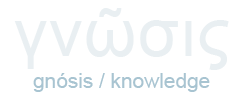Ionic liquids for the molecular enantiorecognition of free l-T3, l-T4 and d-T4
Date
2015Author
Stefan-Van Staden, R. -IMitrofan, Grigorina
Comnea‐Stancu, Ionela Raluca
Van Staden, J. F.
Aboul‐Enein, Hassan Y.
ISSN
2046-2069Source
RSC AdvancesVolume
5Issue
92Pages
75451-75457Google Scholar check
Keyword(s):
Metadata
Show full item recordAbstract
Ionic liquids were proposed for the molecular enantiorecognition of free l-T3, l-T4 and d-T4. l-Phenylalanine tert-butyl ester lactate (l-PheC4-Lac), l-alanine tert-butyl ester l-lactate (l-AlaC4-Lac) and l-alanine tert-butyl ester nitrate (l-AlaC4-NO3) were physically immobilized in a diamond paste. The best linear concentration range for the assay of free l-T4 was obtained with the microsensor modified with l-AlaC4-NO3 (1 × 10-10-1 × 10-8 mol L-1) while for the assay of free l-T3 and free d-T4, the microsensor based on l-PheC4-Lac provided the best linear ranges of 6 × 10-12-1 × 10-11 mol L-1, and 1 × 10-11-1 × 10-9 mol L-1, respectively. The signature of the analytes (the toff value) was different for each sensor, proving their enantiorecognition capacity. The main advantages of the constructed sensors are that the limits of determination achieved for free l-T3 (6 × 10-12 mol L-1), free l-T4 (1 × 10-6 mol L-1) and free d-T4 (1 × 10-11 mol L-1) are low, the sample did not need any pretreatment before measurement, the assay is fast and reliable, and can be performed for both whole blood or pharmaceutical formulations without any sample pretreatment steps for whole blood samples, and by just dissolving the T4 tablets in distilled water. The recoveries were higher than 99.00% for all thyroid hormones with RSD (%) values lower than 1.00%. © The Royal Society of Chemistry.
